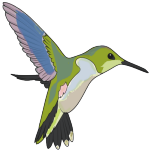Teaching Children with Attention Deficit Hyperactivity Disorder (ADHD)
Recommendations for teaching children with ADD or ADHD.
Attention deficit disorder is a syndrome characterized by serious and persistent difficulties in the following three specific areas:
- Attention span.
- Impulse control.
- Hyperactivity (sometimes).
ADD ADHDis a chronic disorder that can begin in infancy and extend through adulthood, having negative effects on a child's life at home, school, and within the community. It is conservatively estimated that 3 to 5% of our school-age population is affected by ADD ADHD The term attention deficit disorder was introduced to describe the characteristics of these children more clearly.
- Seat students with ADD ADHD near the teacher's desk, but include them as part of the regular class seating.
- Place these students up front with their backs to the rest of the class to keep other students out of view.
- Surround students with ADD ADHD with good role models.
- Encourage peer tutoring and cooperative/collaborative learning.
- Avoid distracting stimuli. Try not to place students with ADD ADHD near air conditioners, high traffic areas, heaters, or doors or windows.
- Children with ADD ADHD do not handle change well, so avoid transitions, physical relocation (monitor them closely on field trips), changes in schedule, and disruptions.
- Be creative! Produce a stimuli-reduced study area. Let all students have access to this area so the student with ADD ADHD will not feel different.
- Encourage parents to set up appropriate study space at home, with
set times and routines established for study, parental review of completed
homework, and periodic notebook and/or book bag organization.
Giving Instructions to Students with ADHD/ADHD - Maintain eye contact during verbal instruction.
- Make directions clear and concise. Be consistent with daily instructions.
- Simplify complex directions. Avoid multiple commands.
- Make sure students comprehend the instructions before beginning the task.
- Repeat instructions in a calm, positive manner, if needed.
- Help the students feel comfortable with seeking assistance (most children with ADD ADHD will not ask for help). Gradually reduce the amount of assistance, but keep in mind that these children will need more help for a longer period of time than the average child.
Require a daily assignment notebook if necessary:
- Make sure each student correctly writes down all assignments each day. If a student is not capable of this, the teacher should help him or her.
- Sign the notebook daily to signify completion of homework assignments.
(Parents should also sign.)
- Use the notebook for daily communication with parents.
Giving Assignments
- Give out only one task at a time.
- Monitor frequently. Maintain a supportive attitude.
- Modify assignments as needed. Consult with special education personnel to determine specific strengths and weaknesses of each student.
Develop an individualized education program.
Make sure you are testing knowledge and not attention span.
Give extra time for certain tasks. Students with ADD ADHD may work slowly. Do not penalize them for needing extra time.
Keep in mind that children with ADD ADHD are easily frustrated. Stress, pressure, and fatigue can break down their self-control and lead to poor behavior.
Modifying Behavior and Enhancing Self-Esteem
Providing Supervision and Discipline:
Remain calm, state the infraction of the rule, and avoid debating or
arguing with the student.
Have pre-established consequences for misbehavior.
Administer consequences immediately, and monitor proper behavior frequently.
Enforce classroom rules consistently.
Make sure the discipline fits the "crime," without harshness.
Avoid ridicule and criticism. Remember, children with ADD ADHD have difficulty
staying in control.
Avoid publicly reminding students on medication to "take their medicine."
Providing Encouragement:
Reward more than you punish, in order to build self-esteem.
Praise immediately any and all good behavior and performance.
Change rewards if they are not effective in motivating behavioral change.
Find ways to encourage the child.
Teach the child to reward himself or herself. Encourage positive self-talk
(e.g., "You did very well remaining in your seat today. How do you
feel about that?"). This encourages the child to think positively
about himself or herself.
Other Educational Recommendations
Educational, psychological, and/or neurological testing to determine
learning style and cognitive ability and to rule out any learning disabilities
(common in about 30% of students with ADD ADHD).
A private tutor and/or peer tutoring at school.
A class that has a low student-teacher ratio.
Social skills training and organizational skills training.
Training in cognitive restructuring (positive "self-talk," e.g.,
"I did that well").
Use of a word processor or computer for schoolwork.
Individualized activities that are mildly competitive or noncompetitive
such as bowling, walking, swimming, jogging, biking, karate. (Note: Children
with ADD/ADHD may do less well than their peers in team sports.)
Involvement in social activities such as scouting, church groups, or other
youth organizations that help develop social skills and self-esteem.
Allowing children with ADD ADHD to play with younger children if that is where
they fit in. Many children with ADD ADHD have more in common with younger children
than with their age-peers. They can still develop valuable social skills
from interaction with younger children.
